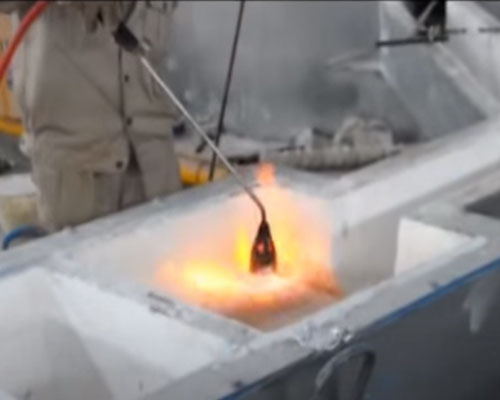With the development of the metallurgical industry, aluminum foundries pay more and more attention to the purity of aluminum. The CFF filtering method is currently the most widely used and most economical filtering method in the world. So do you know the CFF Filtration Mechanism, let’s understand it together.
CFF Filtration Mechanism
Through screening, diffusion interception, friction, sedimentation, and other mechanical filtration principles, ceramic foam filter plates can block impurities in the aluminum liquid, and pure aluminum liquid can smoothly flow out along the filter pores. The filtration efficiency is proportional to the pore size of the foam ceramic mesh. The smaller the mesh, the stronger the ability to intercept small particles.
The effect of the sediment layer or filter cake layer. With the deposition of particles in the melt, the curved interconnected grids act as support walls, and the ability to capture heterophasic particles is improved.

The rough surface formed by the gaps on the surface of the scaffold body increases the interface between the aluminum liquid flow and the ceramic solid surface. It can promote the particles in the aluminum liquid flow to be more disordered, which is conducive to the capture and deposition of solid particles.
Due to the micro-cracks and pinholes on the surface of the mesh scaffold, fluorides with a strong affinity for particles such as Al2O3 were deposited in advance. It can promote the complete filter cake layer effect and strong chemical adsorption force, and the ability to capture the remaining heterogeneous particles is strengthened.
Ceramic Foam Filtration
Furthermore, the temperature field effect from the smelting process and the transmission process of the metal melt structure will inevitably form a thick bottom difference of the alloy solute. The metal melt is redistribution — integration — redistribution — integration, which is also a good alloying process. Some high-melting metal phases and compounds re-aggregate and grow, and the fine heterogeneous phases aggregate and grow, which is conducive to filtration and capture. This can also be explained from the changes in the concentration of H, Al2O3, Fe phase, and Ti phase before and after filtration. Especially two-stage filtration or pore gradient thick plate filtration is more obvious.

